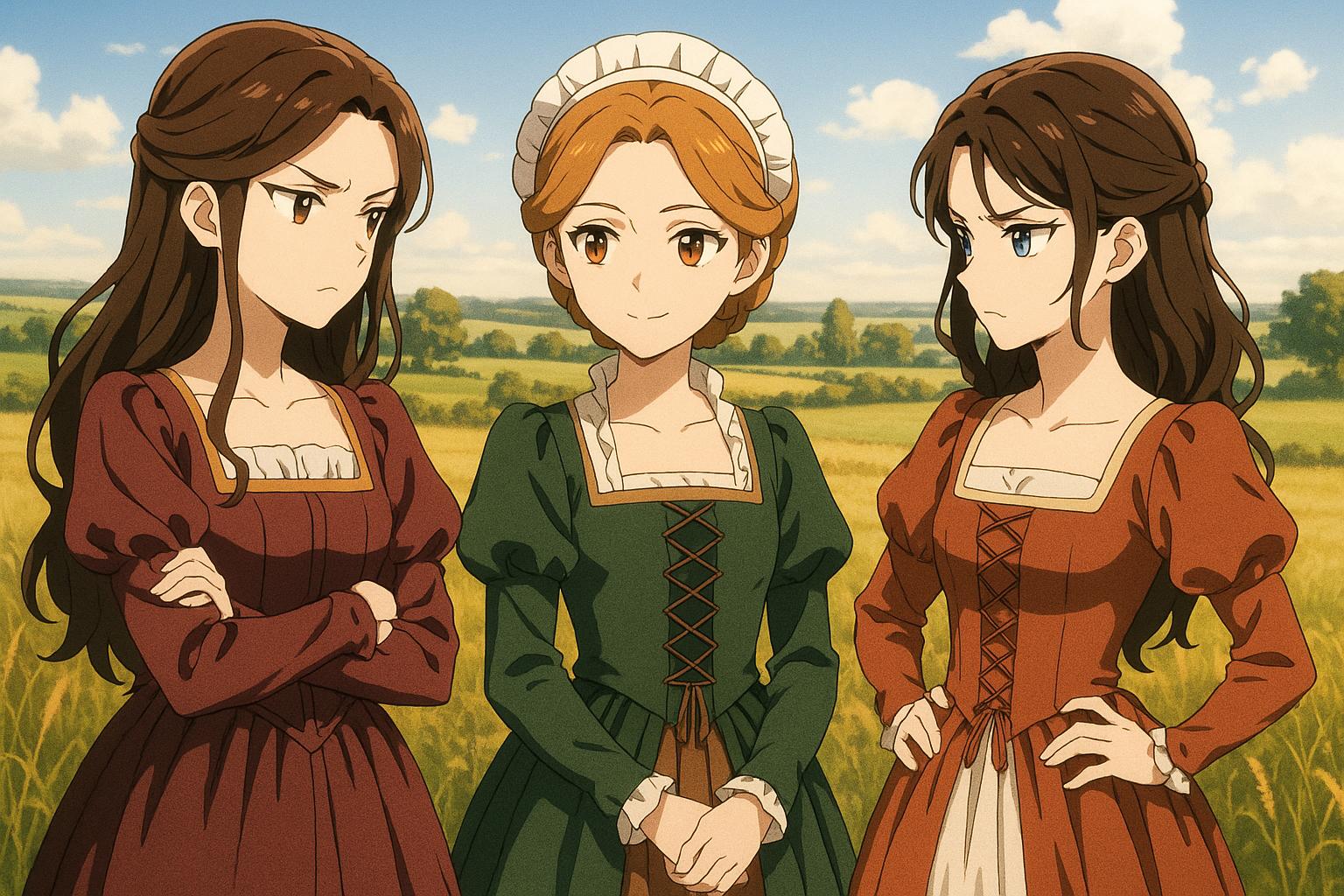Ava Pickett's debut play, 1536, now at the Almeida Theatre, delves into the heavy themes of femininity and power dynamics in Tudor England through a uniquely modern lens. With its vibrant portrayal of female friendship against the looming backdrop of Anne Boleyn’s tragic fate, the production showcases how systemic misogyny affects even the most intimate relationships. Set in the final months of Boleyn’s life, the narrative unfolds in a sun-soaked Essex field where three friends—Anna, Jane, and Mariella—grapple with not only their personal ambitions but also the seismic shifts in the political landscape as the Queen faces treason charges.
The structure of the play cleverly shifts focus from the grandeur often associated with Tudor dramas, opting instead for a grounded exploration of womanhood in an oppressive society. This setting allows for a striking juxtaposition: while the characters engage in typical girlhood pastimes—gossiping and dreaming—news of the Queen’s confinement reverberates through their lives, altering the dynamics of their friendship. The impact of royal decisions on ordinary women is laid bare, emphasising that patriarchy permeates not just palaces, but also fields and farmhouses.
1536 captures the bittersweet essence of female solidarity, portraying its fragility in the face of external pressures. The dialogue is described as both intimate and incisive, with lines that resonate with contemporary relevance. It parallels modern discussions around gender politics, akin to the themes explored in productions like Netflix’s Adolescence. Pickett’s script cleverly blends rich vernacular with sharp wit, delivering moments of both laughter and heart-wrenching gravity.
Critics have lauded the performances of Siena Kelly, Liv Hill, and Tanya Reynolds, who embody their characters with both lightness and depth. Each performance complements the others, crafting a palpable chemistry that draws audiences into their shared experiences. The laughter shared in their camaraderie shifts to tension as the escalating news from London infiltrates their sanctuary, reflecting how they inadvertently start to mirror the oppressive structures they hoped to escape.
Director Rebecca Frecknall's vision is crucial to the play's impact, creating a set that feels both tactile and ephemeral, where the beauty of the English countryside turns ominous as the plot thickens. Scenes shift seamlessly from comedic levity to haunting tension, capturing the disquiet that comes with watching friendships fracture under societal pressures. However, while the production is praised for its rich emotional exploration, some critics note that the final act could feel rushed, hinting at lost opportunities for deeper emotional resonance.
Yet, for all its intricacies, 1536 does not shy away from confronting female anger, which it portrays through a climactic montage featuring striking visuals accompanied by contemporary music. This artistic choice, while innovative, has elicited mixed responses, suggesting a clash between the play’s naturalistic tone and its stylised culmination. Critics argue that this dissonance slightly detracts from the powerful undercurrents established earlier in the narrative but ultimately contributes to the play's urgent commentary on misogyny across ages.
Ultimately, 1536 emerges not merely as a historical drama but as a resonant critique of the enduring challenges women face, transcending the confines of its period setting. It invites audiences to reflect on the cyclical nature of misogyny, asserting that the struggles of the past continue to echo in contemporary society. This nuanced exploration of women's resilience and camaraderie amidst adversity guarantees that 1536 will resonate deeply, leaving both laughter and uncomfortable truths in its wake.
In a world fraught with complexities, the play affirms that, despite the gloom, there exists a glimmer of hope and tenacity among women—a sentiment as relevant today as it was nearly 500 years ago. The narrative confirms that in the landscape of power, all are impacted; after all, for women caught in a web spun by patriarchal forces, victory appears elusive, but the fight for survival endures, underscored by moments of solidarity and joy.
Reference Map
- Lead article summary
- Summary related to the production's thematic focus and setting.
- Summary regarding the characters and plot development.
- Summary discussing cast details.
- Summary on the awards and accolades for 1536.
- Summary giving an overview of the play's impact and performances.
- Summary regarding critical responses to the play's style and direction.
Source: Noah Wire Services
